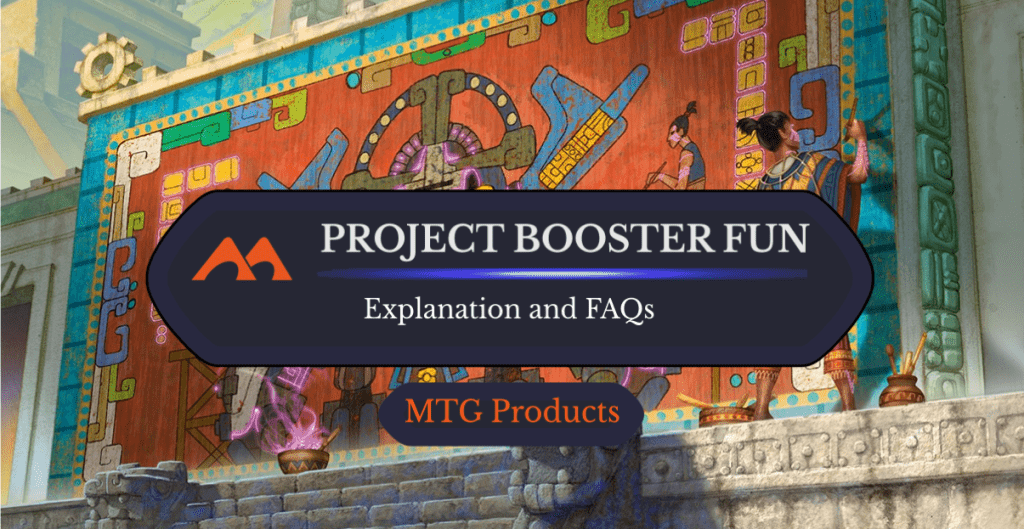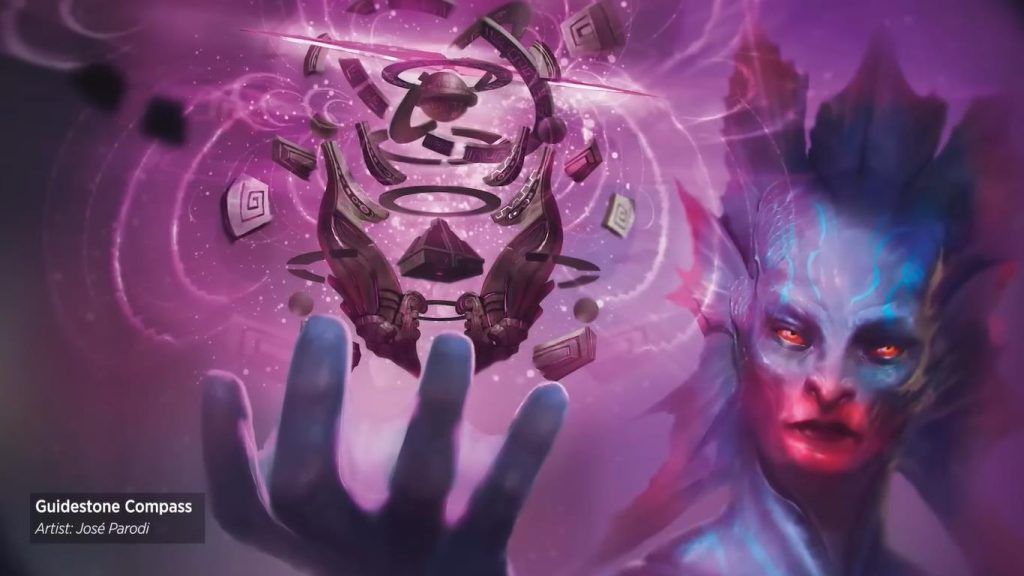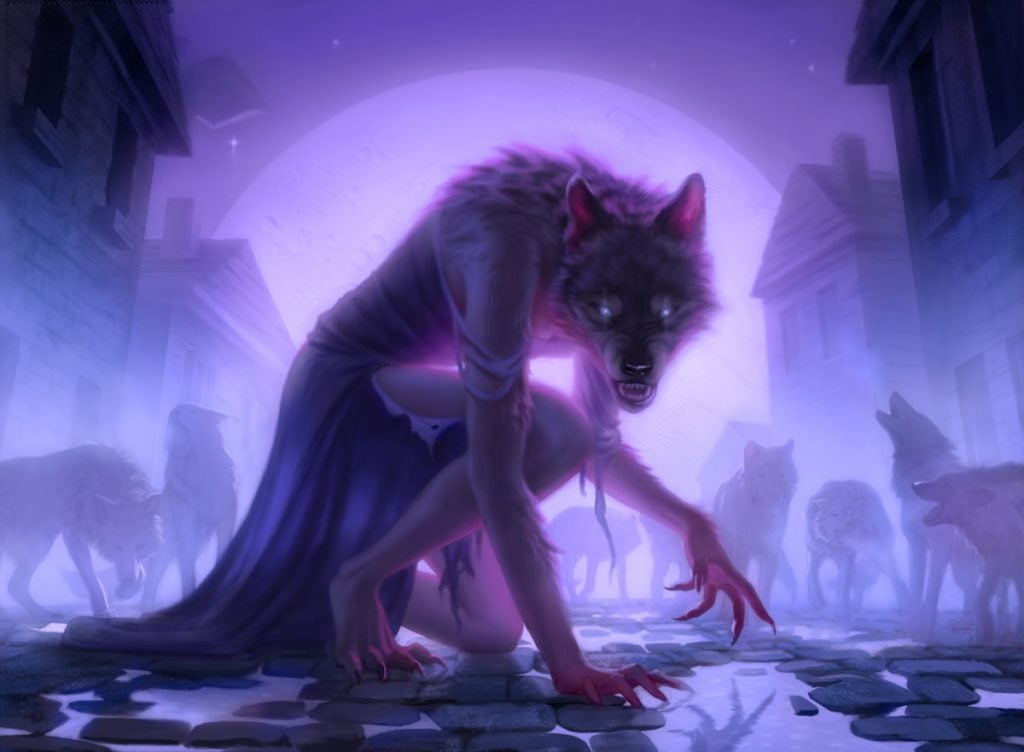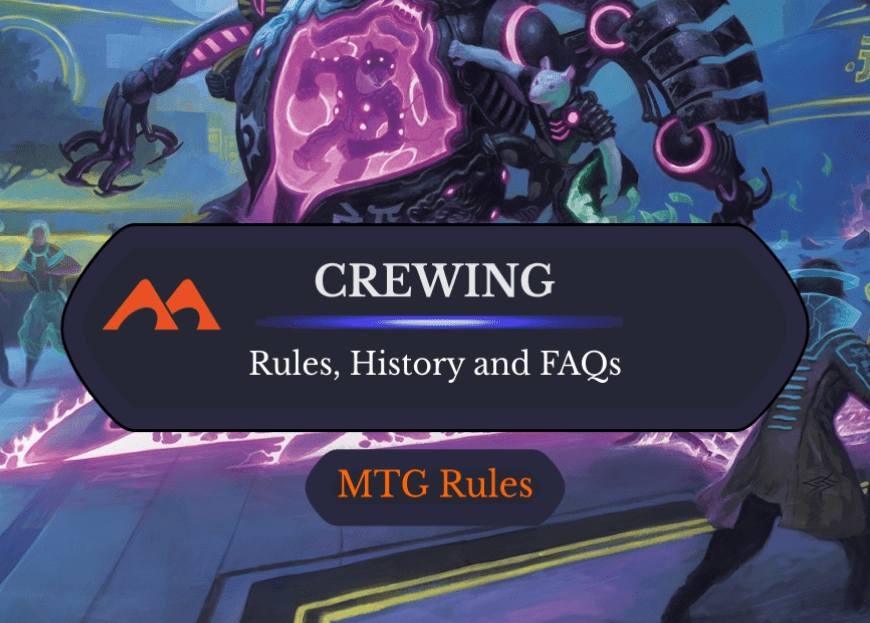Last updated on January 22, 2024

Master's Guide-Mural | Illustration by Racrufi
Many joys come from playing Magic. Playing games is just fun, but strategy games often have a feeling of satisfaction. There’s also the social element; meeting with friends, finding new ones, and matching up against fearsome opponents make “the Gathering” the best part of the game.
One of the simplest joys is just cracking open a pack of cards and seeing what you got, from epic whiffs to money cards like Sheoldred, the Apocalypse, and occasionally finding the perfect card for your Commander deck. But what if opening packs could become even better? That was the goal of Project Booster Fun.
What is Booster Fun?

Guidestone Compass | Illustration by Jose Parodi
Project Booster Fun is an initiative started by Wizards in 2019 with the release of Throne of Eldraine to make opening booster packs even more fun and exciting than it already was. The goal was to give players more agency by giving them additional boosters to open and increase the fun of opening packs by adding extra surprises beyond foils.
The agency aspect comes from additional types of boosters. While Magic has always been sold in booster packs, this is when the term “Draft Boosters” was announced for the classic pack, and Collector Boosters were introduced for the collector-focused player who wanted to open packs but didn’t want to wade through tons of commons to find the flashy stuff.
Part of the fun came from increasing the odds of finding foils, from about 22% to roughly 33% of the time. Another fun aspect was the introduction of frame treatments. Borderless and extended art were used as promotional cards. Project Booster Fun aimed to make them available in boosters. This was also the beginning of the Showcase treatments, where each set got a unique border treatment to capture the set's flavor. Some notable examples include the storybook-framed adventure cards from Throne of Eldraine and the stained-glass showcase cards from Dominaria United.
History of Booster Fun
What Set Did It Start With?
Booster Fun began with Throne of Eldraine in 2019. It was the first set with Collector Boosters and showcase frames.
What Packs Have Booster Fun?
A list of sets that have utilized aspects of Booster Fun, including showcase borders and extra pack types, include:
- Throne of Eldraine
- Theros Beyond Death
- Ikoria: Lair of Behemoths
- Zendikar Rising
- Kaldheim
- Strixhaven: School of Mages
- Dungeons & Dragons: Adventures in the Forgotten Realms
- Innistrad: Midnight Hunt
- Innistrad: Crimson Vow
- Kamigawa: Neon Dynasty
- Streets of New Capenna
- Dominaria United
- The Brothers’ War
- Phyrexia: All Will Be One
- March of the Machine
- March of the Machine: Aftermath
- Wilds of Eldraine
- The Lost Caverns of Ixalan
- Modern Horizons 2
- Commander Masters
- Double Master 2022
- Lord of the Rings: Tales from Middle-Earth
How Has It Changed?
One of the biggest changes to Booster Fun came in 2021 when Wizards introduced an additional booster type: Set Boosters. These products included additional rare slots and fewer commons, with a lower foil rate than Collector Boosters; they essentially bridge the game between Draft Boosters and Collector Boosters. Set Boosters contained cards from the main set and the accompanying Commander sets. It also started “The List,” which Wizards would use to reprint older cards. Cards on The List would use their original art, with the planeswalker symbol added to the bottom left corner to differentiate them from their original printing.
Another massive change came with the announcement of Play Boosters. Coming in 2024 with Murders at Karlov Manor, Play Boosters effectively roll Draft Boosters and Set Boosters into a single product. Collector Boosters will remain the same and Play Boosters will become the option to play Limited with.
Does Booster Fun Make Magic Better?
There are pros and cons to Booster Fun. One of the most notable pros comes from card prices generally going down. Cards like Sheoldred, the Apocalypse and The One Ring prove that some Magic cards will always have value, but so many products with so many versions of cards has led to the overall cost of singles going down.
The influx of new boosters and borders brings questions of oversaturation. How much is too much? Once everything has special frames, are any of them notable? Having multiple versions of one card between showcase frames and the normal set art can hinder board clarity, especially in Limited.
Full-art basics especially seem to suffer from oversaturation. Originally introduced with Zendikar, they were meant to be an exciting include, to capture the magical flavor of a plane so rich in mana that the world itself roiled to contain it.
The new full-arts in LCI look like ad cards with a QR code. Full-art basics have reached the point where they are no longer special. Recently, we’ve also seen a trend in complex full-art basics that obscure legibility. The basics from Innistrad: Double Feature and the maps from Tales of Middle-earth make it hard to distinguish each color from one another.
In addition to greater board complexity, having so many products makes things harder on players and LGSs. Introducing multiple boosters and many cards having different versions can make organization tricky. The variety of products also splits the player base; providing more options isn’t always bad but can lead to drastic changes.
Play Boosters are a direct result of this. They were created because Set Boosters were much more popular than Draft Boosters, to the point that the latter, despite being a playable game piece, could have disappeared. In addition to increased complexity, there’s also the question of how surprising some of these additions were.
Overall, I’d consider The List a neat idea that missed the mark. Getting cards like Gemstone Caverns, Wrenn and Six, and Commander's Plate is fantastic, but The List went well beyond staples. Opening Baloth Gorger, Byway Courier, or Bring Low feels like a bad joke. Not every card on this list needs to be an $80 whopper, but even just mid-priced staples like Eldritch Evolution and Professional Face-Breaker or truly iconic cards from Magic’s past, such as Terror, would have been more exciting includes.
Now, Play Boosters do seem positioned to fix some of these problems. Combining two commercially available boosters into one decreases the number of options, and therefore the complexity of buying boosters. Additionally, The List will be altered. Instead of containing a spread of 300 cards, each set will have a tailor-made group of reprints along with Special Guests, totaling a List of around 50 cards. This will hopefully lead to a vast reduction in the number of duds and create a more cohesive, exciting group of cards to open.
Ultimately, I think Booster Fun is a well-intended idea that has gone off the rails, over-saturating the market with increasingly un-special borders and full-arts while making it easier to collect cards. I’m incredibly optimistic about Play Boosters correcting the issues with Booster Fun, though not wholly convinced it was necessary in the first place.
Is The Name Dumb?
Booster Fun does a great job introducing the overall goal: making cracking packs even more addicting than they already were. A cynic might dub it “Project Make a Million Alternate Arts So Local Game Stores Go Insane Cataloging Cards,” but that’s not super catchy.
“Project Pack Crack” captures the idea well but has some marketing qualms that would keep it locked in a folder. “Project Eyecatchers” is another alternative. It’s certainly eye-catching when you see dozens of Magic boosters at the store and, while some of the basics are questionable, the showcase frames and arts are often quite fetching.
Wrap Up

Werewolf Pack Leader | Illustration by Miranda Meeks
The goal of Project Booster Fun makes a lot of sense. Providing the player base with new, exciting options should always be a goal of any game developer. That said, some parts of the project felt flawed and left much to be desired. Play Boosters are positioned to address some of these failures, but only time will tell how it goes.
Have you enjoyed Project Booster Fun? What set has your favorite showcase frame? Let me know in the comments or on the Draftsim Discord!
Stay safe, and keep cracking packs!
Follow Draftsim for awesome articles and set updates:

Add Comment